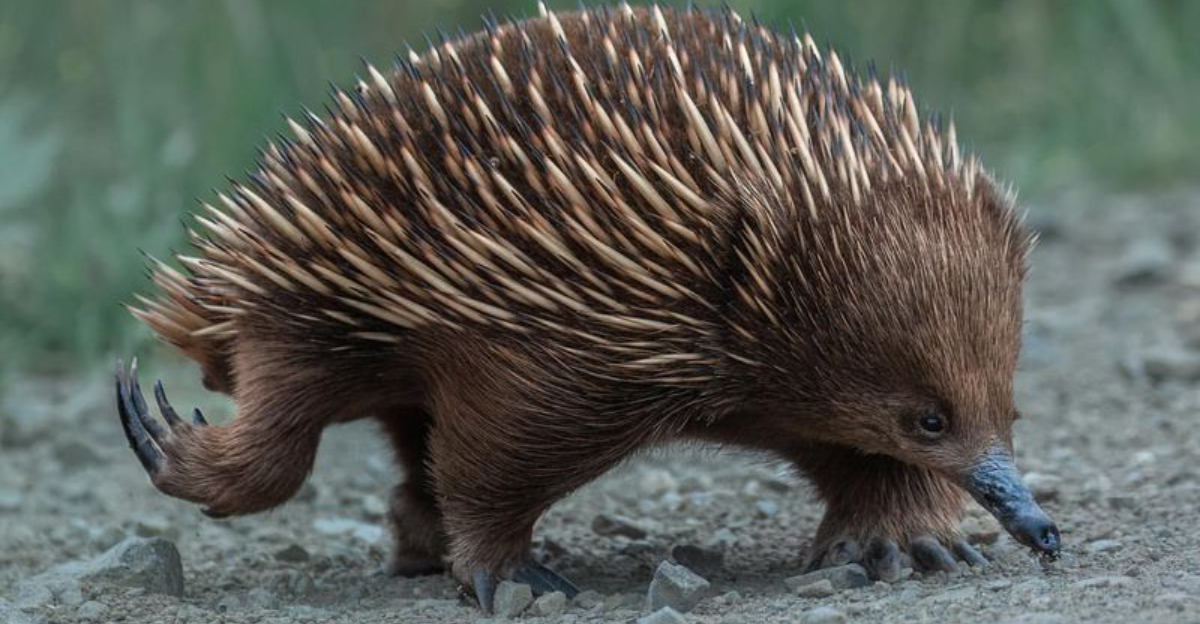Australia, a land of stunning natural beauty, is home to some of the world’s most unique and intriguing animals. These creatures, with their distinctive appearances and unexpected behaviors, have fascinated scientists and tourists alike. From hopping marsupials to laughing birds, each has its own story to tell.
Today, we’ll take you on a journey to discover some of Australia’s iconic animals and the surprising traits that make them truly remarkable. So, prepare to be amazed by their quirks and marvel at the wonders of Australian wildlife!
1. Kangaroo
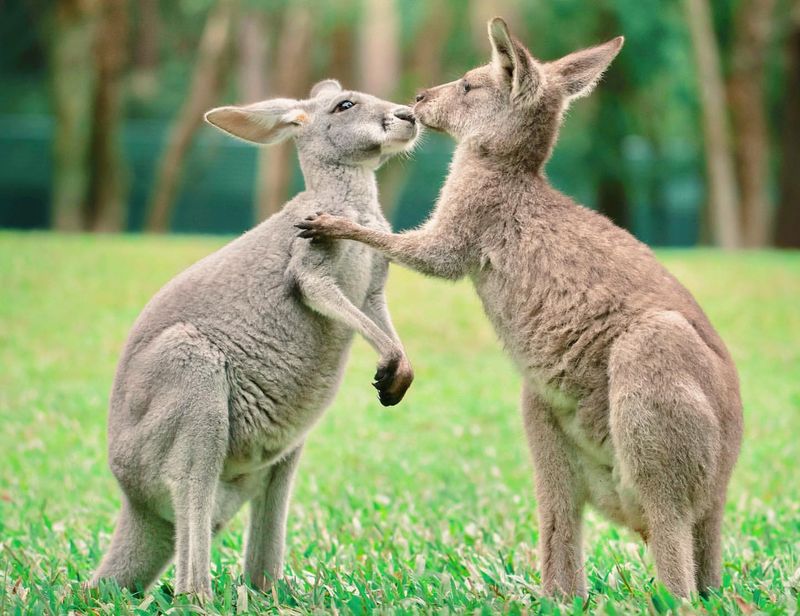
Kangaroos are perhaps the most emblematic of Australia’s wildlife and are known for their powerful hind legs and hopping abilities.
What many find surprising is the kangaroo’s social structure, often forming groups called mobs led by a dominant male. This hierarchy influences their mating rituals and even food-sharing behaviors, showing a complexity many don’t associate with the animal’s carefree image.
Another fascinating aspect is how kangaroos cool themselves. Unlike sweating, they lick their forearms where capillaries are close to the skin, allowing the evaporation to cool their blood. This adaptation is vital in the Australian heat, showcasing a clever survival tactic.
Moreover, kangaroos have a unique energy-efficient movement. Their elastic tendons store energy, making hopping not only fast but also less tiring.
This efficient use of energy enables them to cover large distances in search of scarce food and water resources. Kangaroos truly exemplify adaptability and resilience in the harsh Australian landscape.
2. Koala
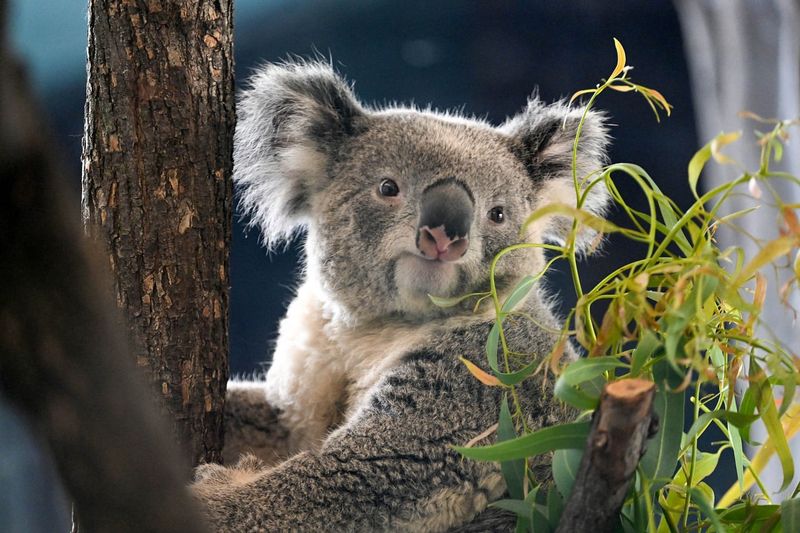
The koala, often mistakenly called a bear, spends most of its life in eucalyptus trees. One might find it surprising that these creatures are not just lazy; their diet of eucalyptus leaves, which are toxic to most animals, provides little energy, necessitating long hours of rest.
Koalas have a highly specialized digestive system, including a long cecum, which allows them to detoxify and extract nutrients from the leaves. This adaptation is crucial for their survival, as eucalyptus is their primary food source. Koalas are also known for their unique vocalizations.
During mating season, males produce booming bellows that carry over long distances, a behavior unexpected from such a small animal. These sounds help establish territory and attract females. Despite their sedentary image, koalas are equipped with impressive adaptations for their niche lifestyle.
3. Platypus
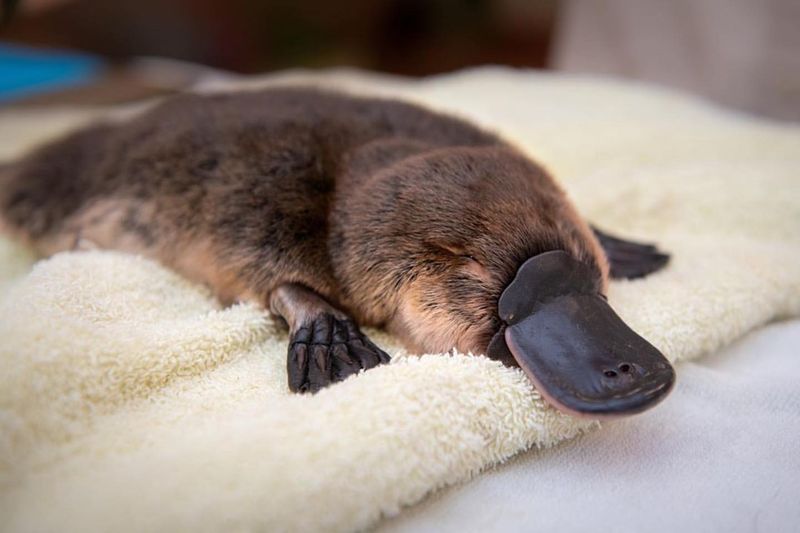
The platypus is a living contradiction, blending traits of mammals, birds, and reptiles. Its appearance with a duck bill and webbed feet is perhaps the most striking example of evolutionary creativity.
Surprisingly, the platypus is one of the few venomous mammals, with males having spurs on their hind limbs capable of delivering a painful sting. Their hunting behavior is equally intriguing. Platypuses close their eyes, ears, and nostrils while underwater, relying on electroreception to detect prey.
This extraordinary ability allows them to locate small aquatic creatures through electric signals, a skill akin to using an internal compass. Breeding behaviors are also noteworthy. After laying eggs, the female incubates them by curling her body around them.
The young hatchlings are nourished with milk, although the platypus lacks nipples, and milk seeps through the skin. This unique blend of characteristics makes the platypus a true marvel of nature.
4. Wombat
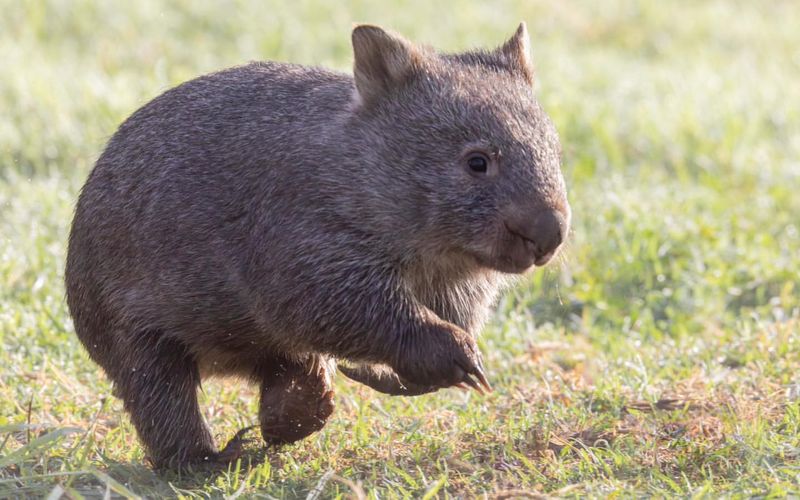
Wombats are sturdy, nocturnal creatures known for their burrowing skills. Their cube-shaped droppings have baffled scientists for years, serving as a unique territorial marker that doesn’t roll away easily.
One surprising behavior is their impressive digging ability. Wombats can create extensive burrows, using their strong claws and powerful limbs. These burrows provide shelter from predators and extreme weather, demonstrating their survival instincts.
Wombats also have a fascinating defensive technique. When threatened, they dive into their burrows and block the entrance with their toughened rear skin.
This natural armor protects them from predators, showcasing a strategic use of their physical traits. The wombat’s unexpected behaviors make it a captivating subject for wildlife enthusiasts.
5. Emu
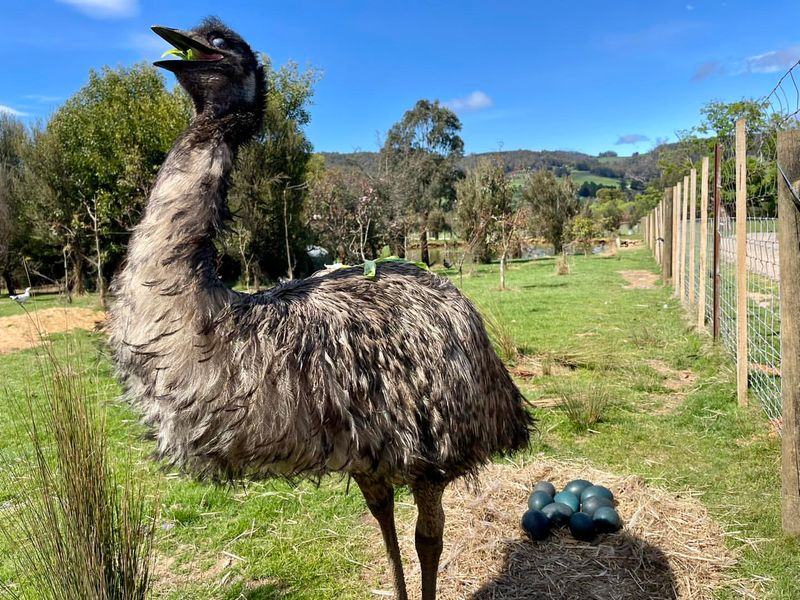
Emus, Australia’s tallest native birds, are known for their speed and endurance. A surprising fact about emus is their incredible running ability, capable of reaching speeds up to 50 km/h.
Their long legs and three-toed feet make them agile runners, able to cover great distances in search of food. During breeding season, it is the male emu that takes on the role of incubating the eggs.
He will sit on the nest for about eight weeks without leaving, relying on stored body fat for sustenance. This unusual reversal of parental roles is a fascinating aspect of emu behavior.
Emus also communicate through a series of grunts, drumming, and booming sounds produced by their inflatable throat sacs.
These vocalizations help maintain social bonds and coordinate group movements. The emu’s surprising behaviors and adaptability make it a standout in the avian world.
6. Dingo
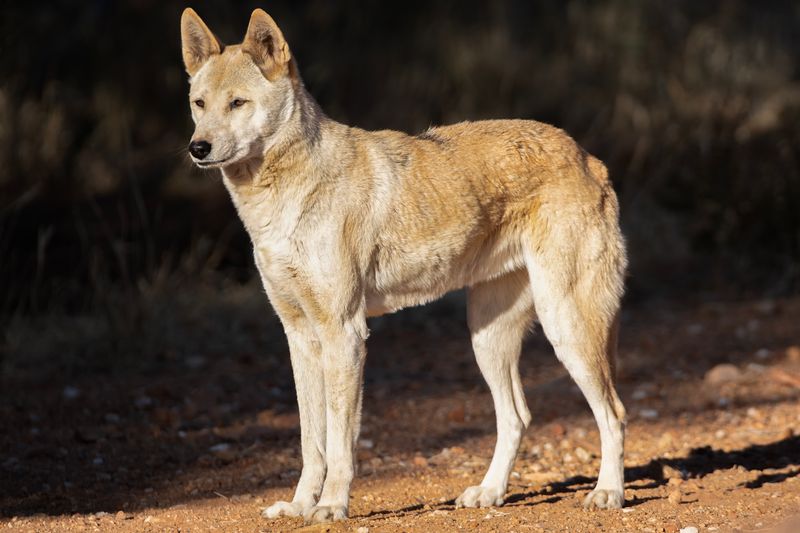
Dingos, Australia’s wild canines, are highly adaptable and thrive in diverse environments. Unlike domestic dogs, dingos rarely bark.
Instead, they communicate through howls, helping them coordinate hunting and maintain social bonds within packs. A notable dingo behavior is their cooperative hunting strategy. Dingos often hunt in groups, using their keen senses and agile bodies to catch prey like kangaroos and rabbits.
This teamwork is a testament to their intelligence and social structure. Dingos also showcase remarkable adaptability. They can survive in harsh desert conditions by finding water and food sources through keen observation and experience.
This adaptability has enabled them to remain a keystone species in the Australian ecosystem, balancing populations of other animals. Dingos’ unique behaviors highlight their role as apex predators in the wild.
7. Kookaburra

Kookaburras are best known for their distinctive call, reminiscent of hearty human laughter. This sound serves as a territorial marker, echoed across the forests and bushland of Australia, and is a delightful reminder of the region’s vibrant avian life.
A surprising behavior of kookaburras is their diet. Though they are often depicted as jovial birds, they are skilled hunters, preying on small mammals, insects, and even snakes. Their powerful beaks allow them to catch and kill swiftly, showcasing their predatory nature.
Kookaburras are also communal nesters, often sharing responsibilities within family groups. This cooperative breeding strategy ensures the survival and success of offspring in the wild. The kookaburra’s blend of charming calls and surprising fierceness makes it a fascinating bird to observe.
8. Echidna
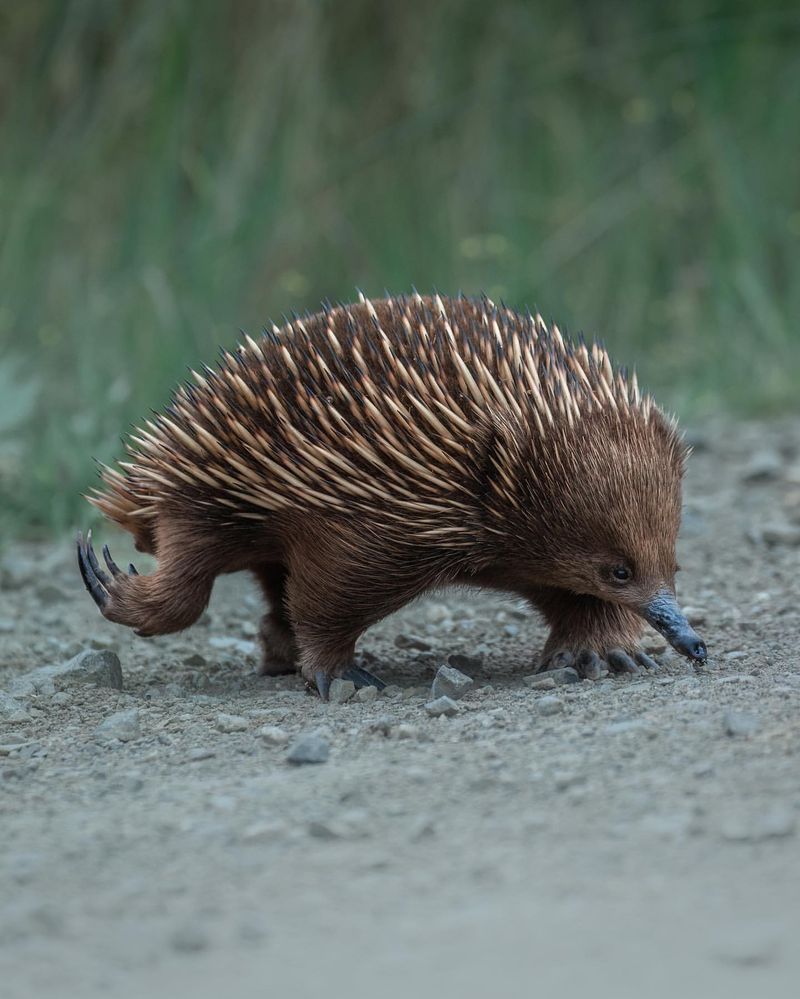
Echidnas, or spiny anteaters, are one of Earth’s most intriguing creatures, with a lineage tracing back millions of years. Covered in spines, echidnas are solitary animals known for their unique method of self-defense, curling into a ball to deter predators.
A surprising aspect of echidna behavior is their feeding habit. They have long, sticky tongues to capture ants and termites, demonstrating a specialized diet. Their strong claws enable them to dig efficiently, uncovering food hidden underground.
Echidnas are also monotremes, egg-laying mammals like the platypus. After the female lays eggs, she carries them in a pouch until hatching.
This reproductive strategy is rare and highlights the echidna’s unique evolutionary path. Their mix of primitive traits and modern-day adaptability continues to intrigue biologists and nature lovers alike.
9. Tasmanian Devil
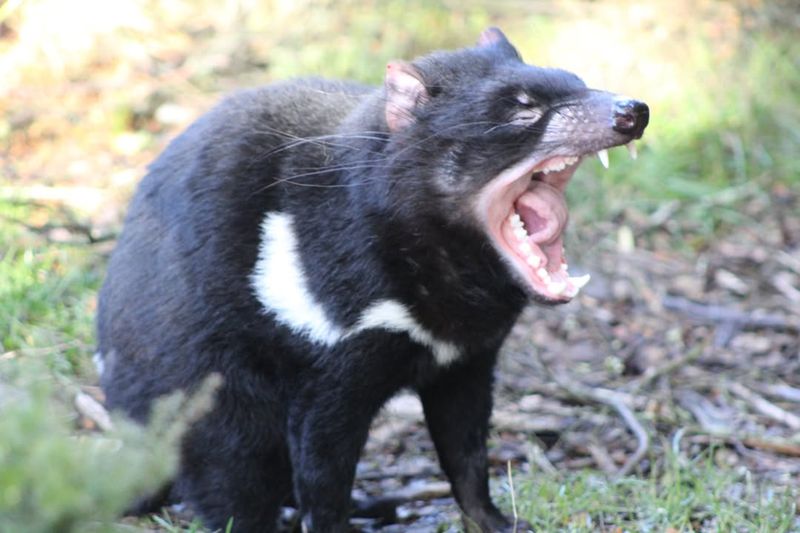
The Tasmanian devil is a carnivorous marsupial with a fearsome reputation, known for its bone-chilling screeches and powerful jaws.
Surprisingly, these creatures play a vital role in their ecosystem as scavengers, helping to keep the environment clean by consuming carrion. Their social interactions are intriguing.
Despite their feisty demeanor, Tasmanian devils engage in communal feeding, often gathering around carcasses and establishing a hierarchy through vocalizations and physical postures.
One of the most surprising behaviors is their ability to store fat in their tails, serving as a resource during food shortages. This adaptation shows their resilience in the face of environmental challenges.
Conservation efforts are ongoing to protect them from a contagious facial tumor disease threatening their population. The Tasmanian devil’s unique behaviors and ecological importance make it an iconic symbol of Australia’s wildlife.
10. Cassowary
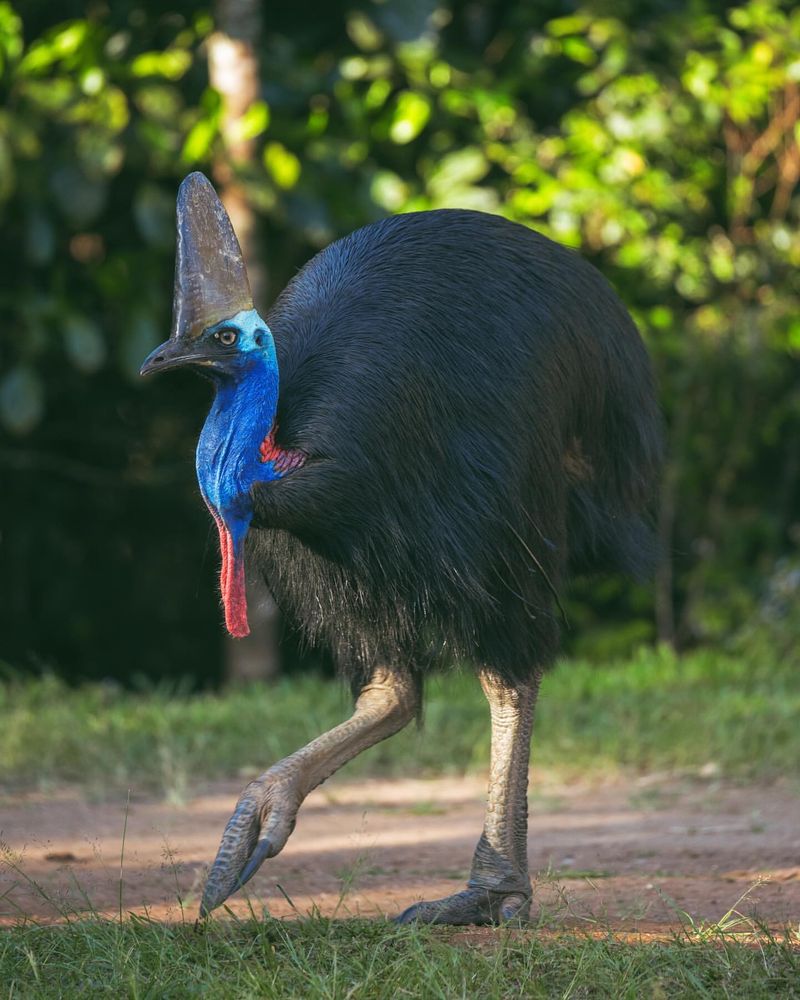
Cassowaries are striking, flightless birds known for their vivid blue and black plumage and intimidating size. They are often dubbed the world’s most dangerous bird due to their powerful legs and sharp claws, capable of delivering formidable kicks.
A lesser-known behavior is the cassowary’s role as a keystone species. By consuming fruits and dispersing seeds across vast areas, they contribute significantly to rainforest regeneration. This ecological contribution is vital for maintaining the biodiversity of their habitat.
Cassowaries are solitary creatures, coming together only for breeding. Post-mating, males take on the responsibility of incubating eggs and raising chicks, a role reversal uncommon in the bird world.
The cassowary’s surprising behaviors and ecological significance make it a subject of fascination among birdwatchers and ecologists alike.

